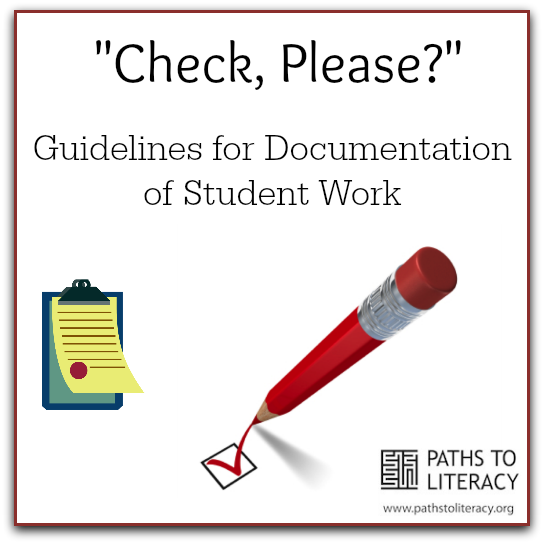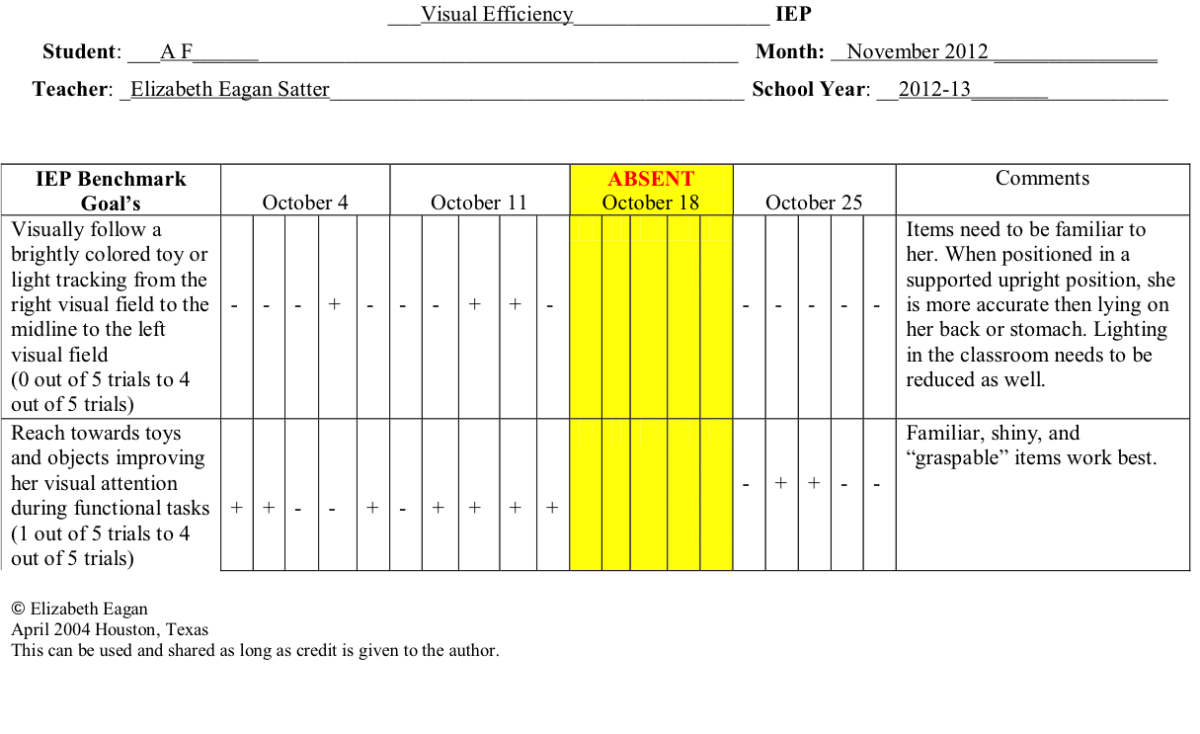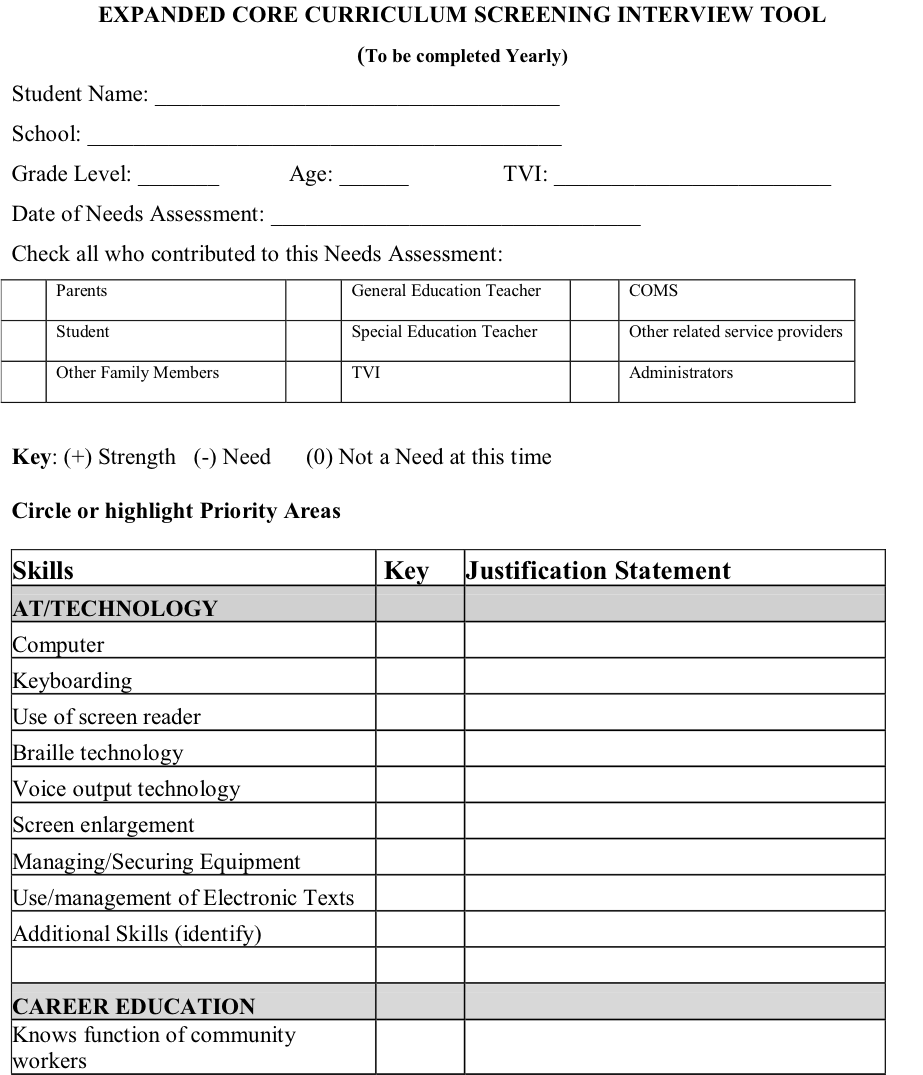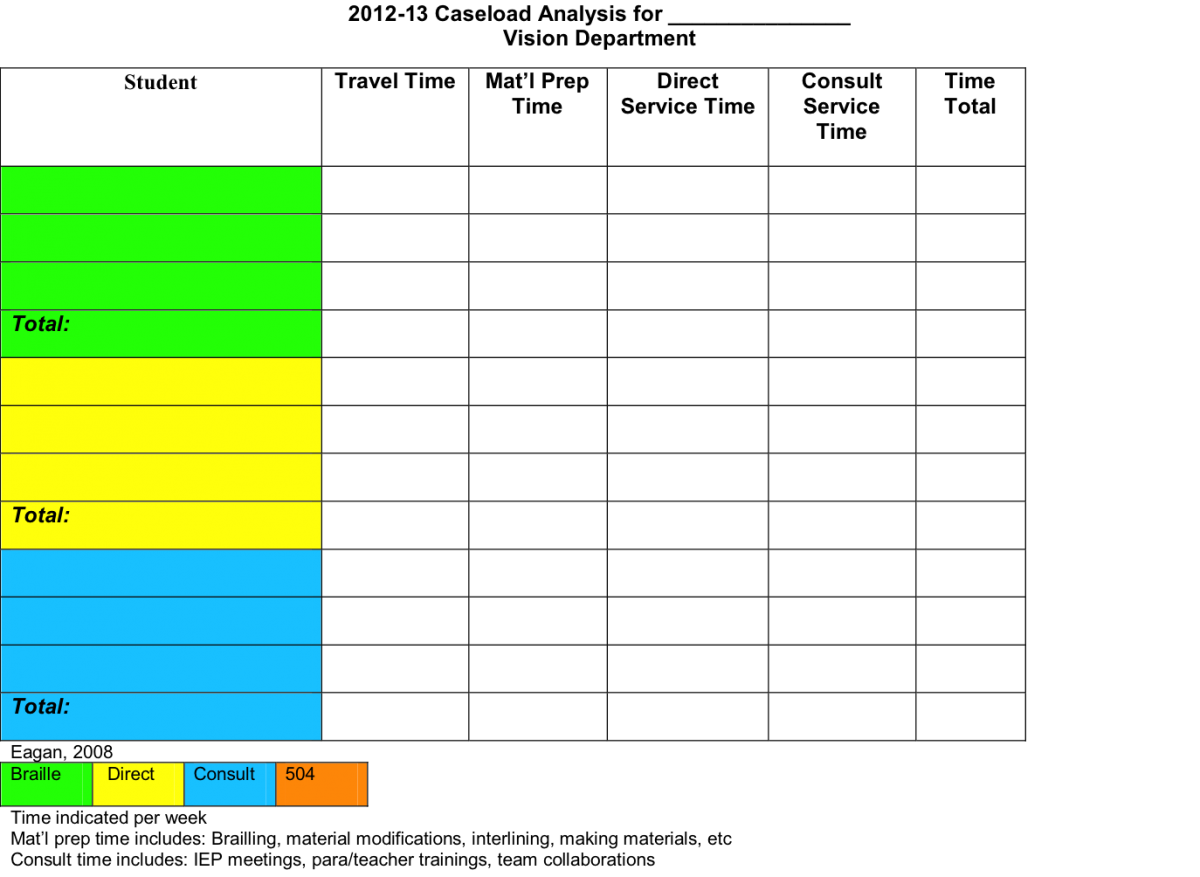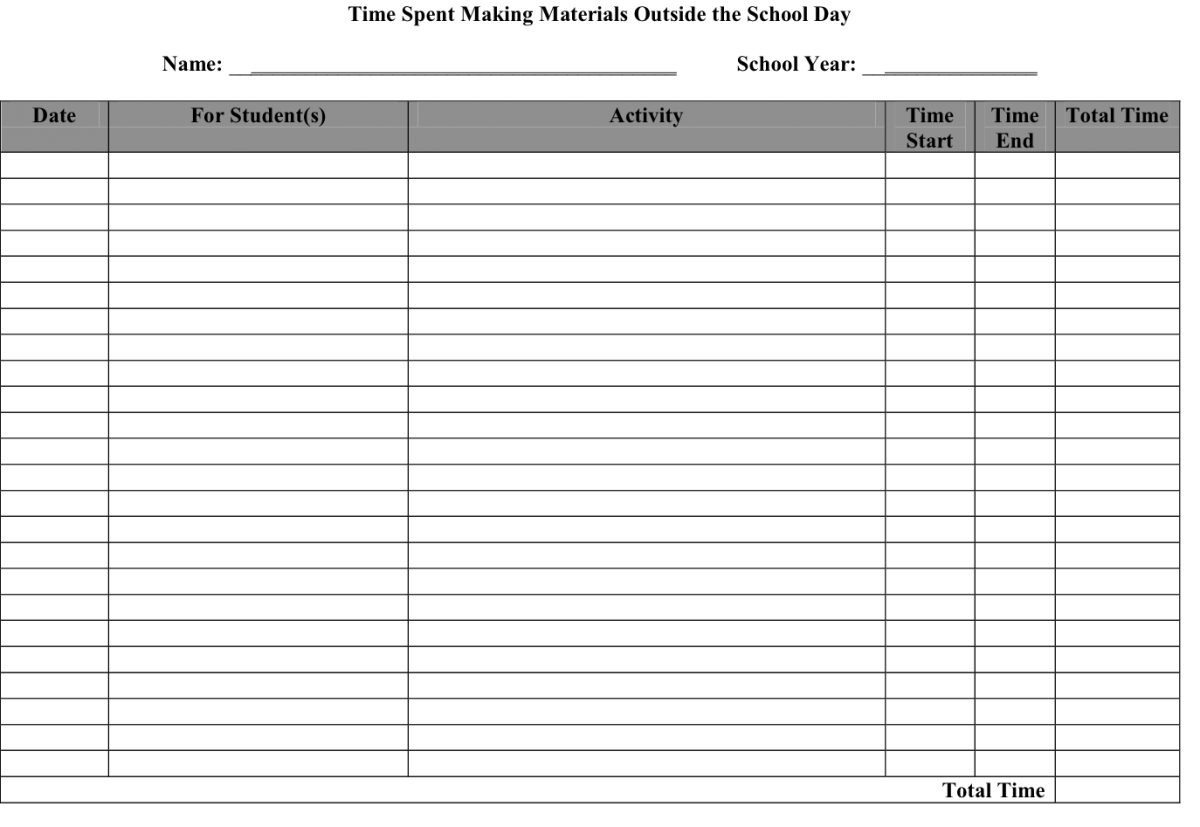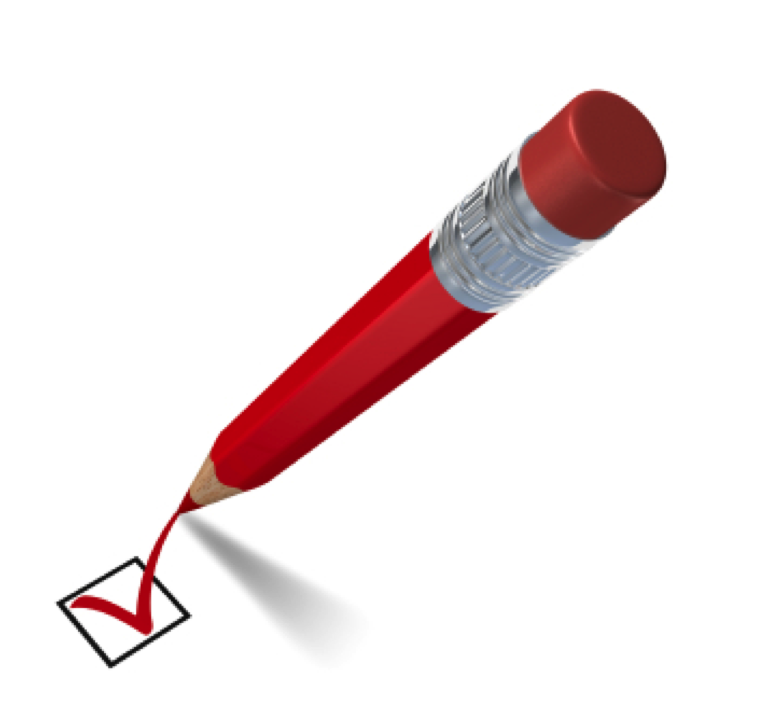
Resource
Check, Please? Guidelines for Documentation of Student Work
Guidelines for the documentation of work of students who are blind or visually impaired
By Liz Eagan
Look Familiar?
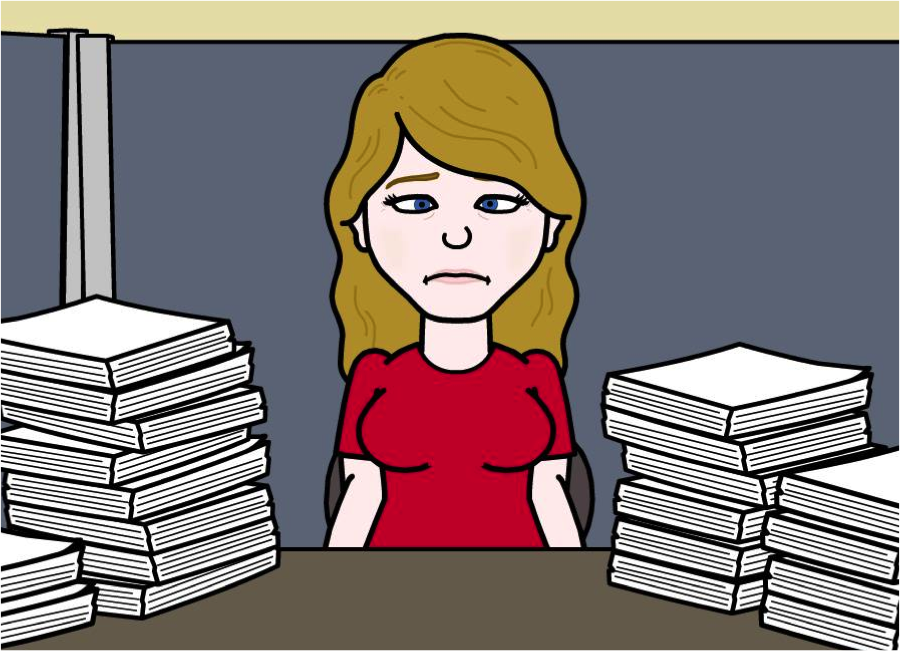
Why Document?
- Chart student progress
- Record contact with parents/teachers/service providers
- Accurate IEP objective updating/progress reports
- Tweak lessons to focus on weakness while expanding on student strengths
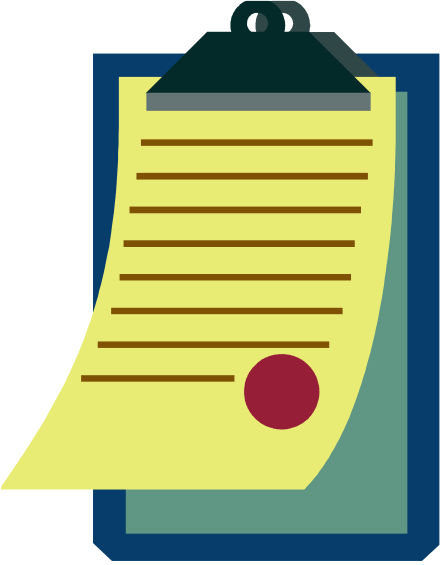
Where to Start?
- Determine what you want to document
- Find a form
- Form not perfect? Adapt it!
- No form? Make one!
What I Document
- Contacts from parents/service providers (school district and agency)
- Student progress (IEP)
- Student behaviors, as appropriate
- Observations of student in classrooms
- Technology use
- Accommodations used/not used
- Teacher consults/feedback
IEP Behaviors
- Whether you’re using percents or fractions, objectives need to be tracked!
- Some teachers use a grade book (paper or electronic), others use data collection sheets
- Find a method that will work for you…
“I’ve got this objective, but I don’t know how to document it…”
- Try a tally sheet type form
- Easy to utilize and keep up with
- Adapt an existing form to meet your needs OR create your own!
- Try using a voice recorder to record your data to put to paper later
IEP Objective Data Collection Example
Completed Data Collection Example
Behavior
- Behavior happens.
- We need to document the behavior during the VI sessions to provide continuity in data collection/implementation of a behavior plan.
Objectives
- to verify the FVE/LMA recommendations are effective
- the teacher is utilizing said recommendations
- the student is on task & prepared
- student is using the technology appropriately
- the student is an active part of the class
Assessment
- FVE/LMA (Functional Vision Evaluation/Learning Media Assessment0
- Technology
- ECC (Expanded Core Curriculum)
Using forms to help document your assessment helps you to not overlook anything and helps to organize your thoughts/write less
Collaboration
- Observations complete
- Evaluations complete
- Time to discuss the student’s needs
- Assist the teacher in lesson planning (i.e. unit on Texas…ensure teacher has the tactile graphics/enlargements needed)meet with other service providers
Recommendations
- We evaluate. We report to the ARD committee. We then provide services, right?
- The recommendations are often overlooked and not provided.
- Simplify them.
Record Keeping
- Information pertaining to the caseload/student
- District information
- Scheduling/lesson plans
- Student attendance
Making Your Own Forms
- You’ve looked and nothing meets your needs…not even to adapt.
- Determine what it is you want in the form (behaviors, objectives, etc.)
- Do you want the form to be a checklist or comments?
- Sketch it out on paper (easier to make corrections).
- Open up a Word or Excel document and create it!
- Keep it simple.
There’s An App for That
- Super Duper Data Tracker
Closing Thoughts…
- Document…just do it!
- Documentation helps verify what you do on a daily basis.
- Documentation helps when you have ARDs that might be contentious.
- Documentation helps when others pick up where you’ve left off when changing teachers/districts.
- It’s the smart thing to do.
- Keep your documentation.
Resources
- Leon-Guerro, R et al. Show me the Data! Data-Based Instructional Decisions Made Simple and Easy. AAPC Publishing, Shawnee Mission, KS (2011).
- Olmstead, Jean E. Itinerant Teaching: Tricks of the Trade for Teachers of Blind and Visually Impaired Students. American Foundation for the Blind, NY (2008).
- Teacher’s Book of Forms. Remedia Publications (2000).
- Evals – Evaluating Visually Impaired Students. Texas School for the Blind and Visually Impaired, Austin (2007).
